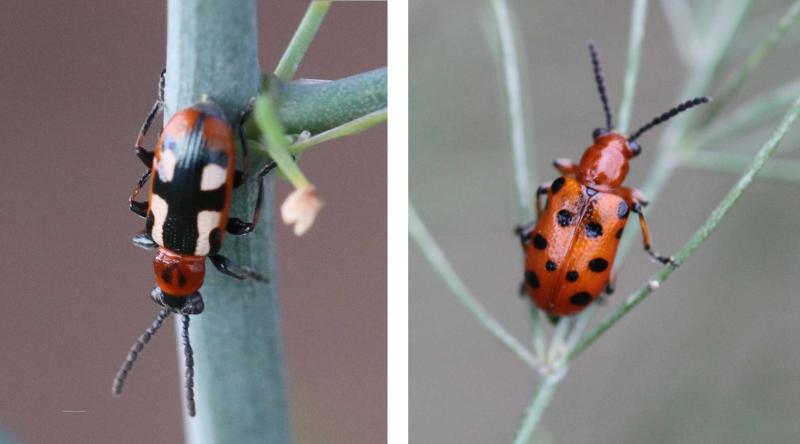
Originally Submitted: August 20, 2020
Updated: June 28, 2023
Written collaboratively by Adam Varenhorst, Amanda Bachmann, Philip Rozeboom, Patrick Wagner, and Brad McManus.
Two of the insects that should be scouted for on asparagus are common asparagus beetles and spotted asparagus beetles. These beetles overwinter as adults near gardens (or even in the hollowed stems of older asparagus plants), and they become active during the spring. Both species are capable of having two generations per year.
Common Asparagus Beetle Identification
Adults
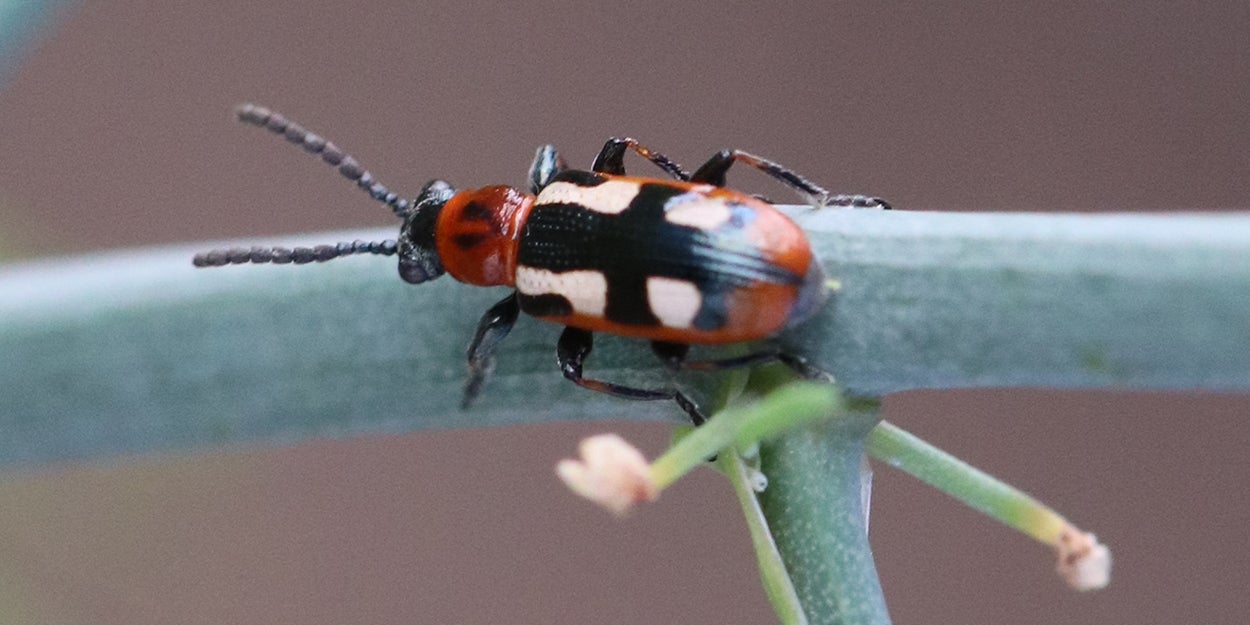
Common asparagus beetles have a black head and legs, an orange thorax with two black spots, and orange and black hardened forewings (elytra) (Figure 1). Each elytron has three cream-colored spots on it. However, the size and shape of the cream-colored spots and the two black spots on the thorax are highly variable. These beetles have black antennae. The common asparagus beetles are approximately one-quarter of an inch long and oval shaped. The adults emerge in early spring and are active until the first hard frost.
Larvae
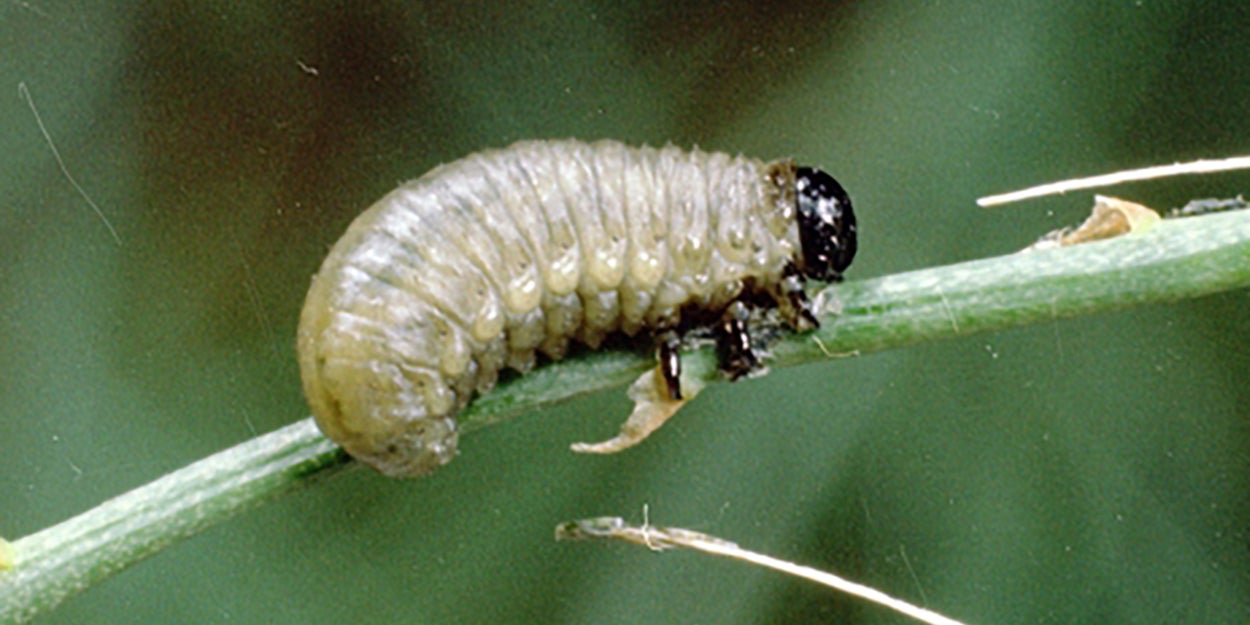
The common asparagus beetle larvae have light-gray to cream colored bodies and black heads and legs (Figure 2).
These larvae will feed on the ferns of the asparagus plants for approximately two weeks before dropping to the soil to pupate.
Eggs
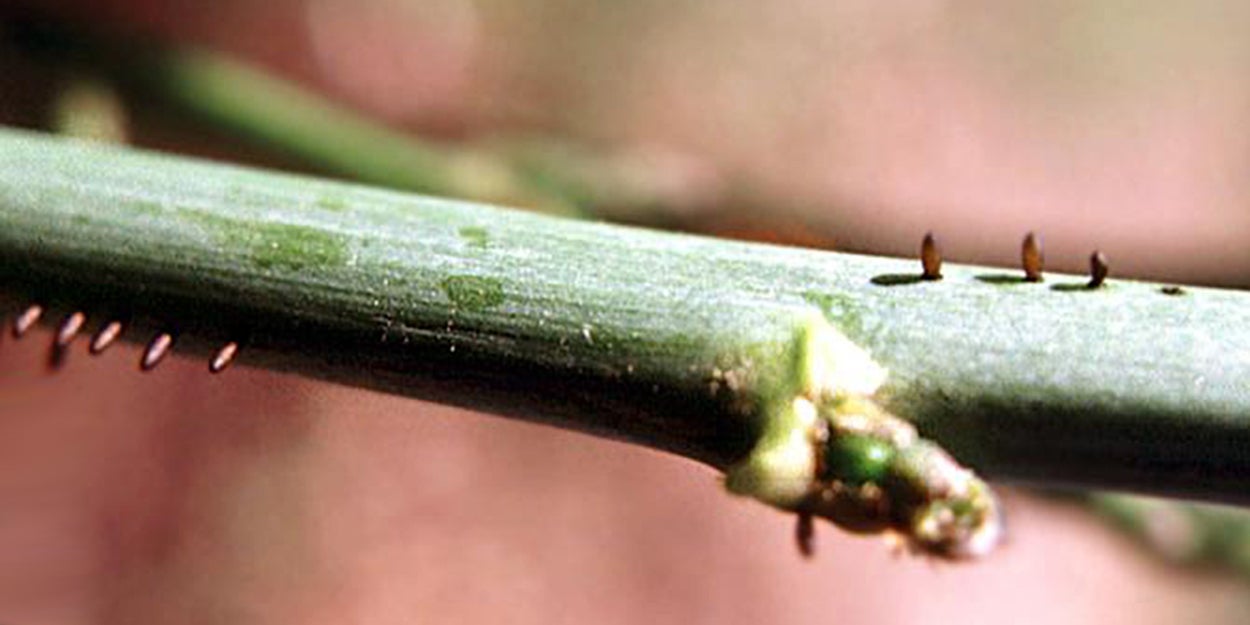
The eggs of the common asparagus beetles are dark brown and cylindrical shaped (Figure 3).
The eggs are laid on the ferns in rows, with a space between each egg.
Twelve-Spotted Asparagus Beetle Identification
Adults
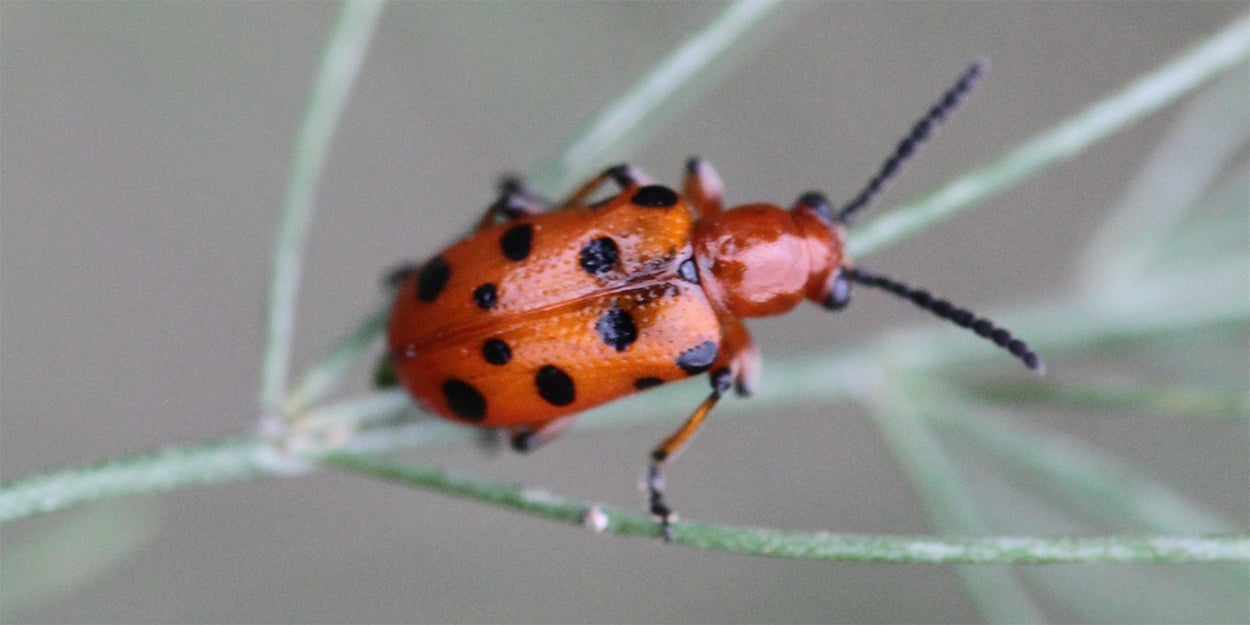
The twelve-spotted asparagus beetle (also referred to as the spotted asparagus beetle) has an orange head, thorax, and abdomen (Figure 4). The elytra are covered with a total of 12 black spots, hence its name. The beetles have black antennae and orange legs that have black coloration around the joints. The adults are approximately one-quarter of an inch long. These adults emerge in mid-May and typically aren’t observed after late July.
Larvae
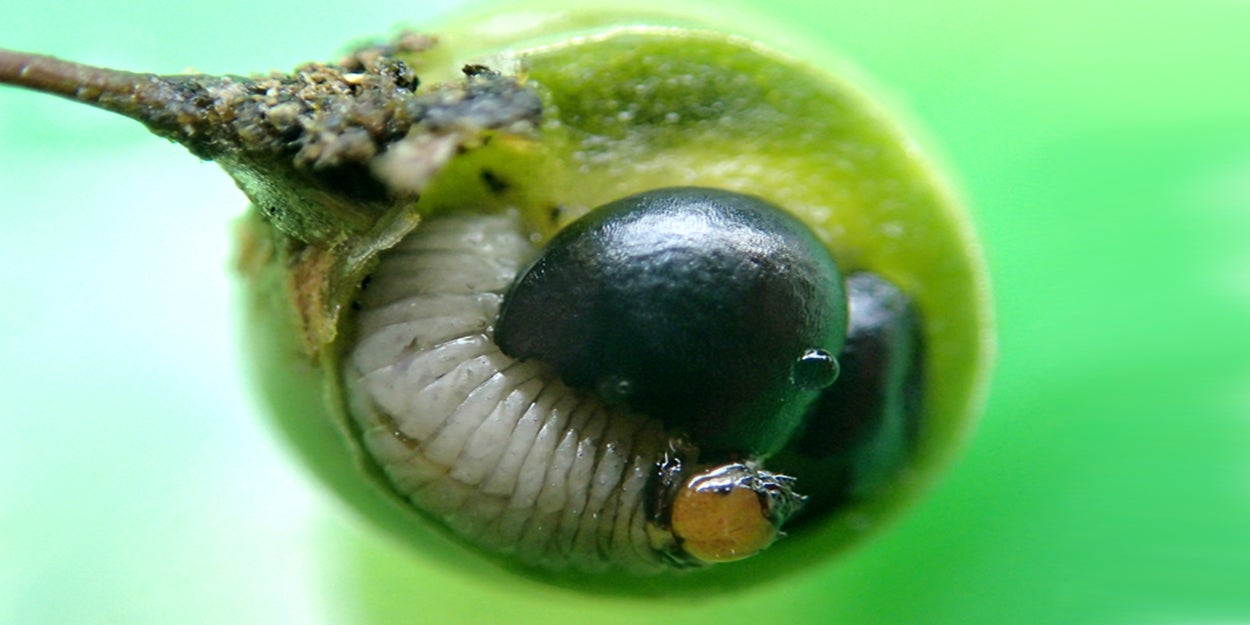
The twelve-spotted asparagus beetle larvae have light gray to cream colored bodies with orange heads and black legs (Figure 5).
The twelve-spotted asparagus beetle larvae feed on the ferns’ asparagus berries.
Eggs
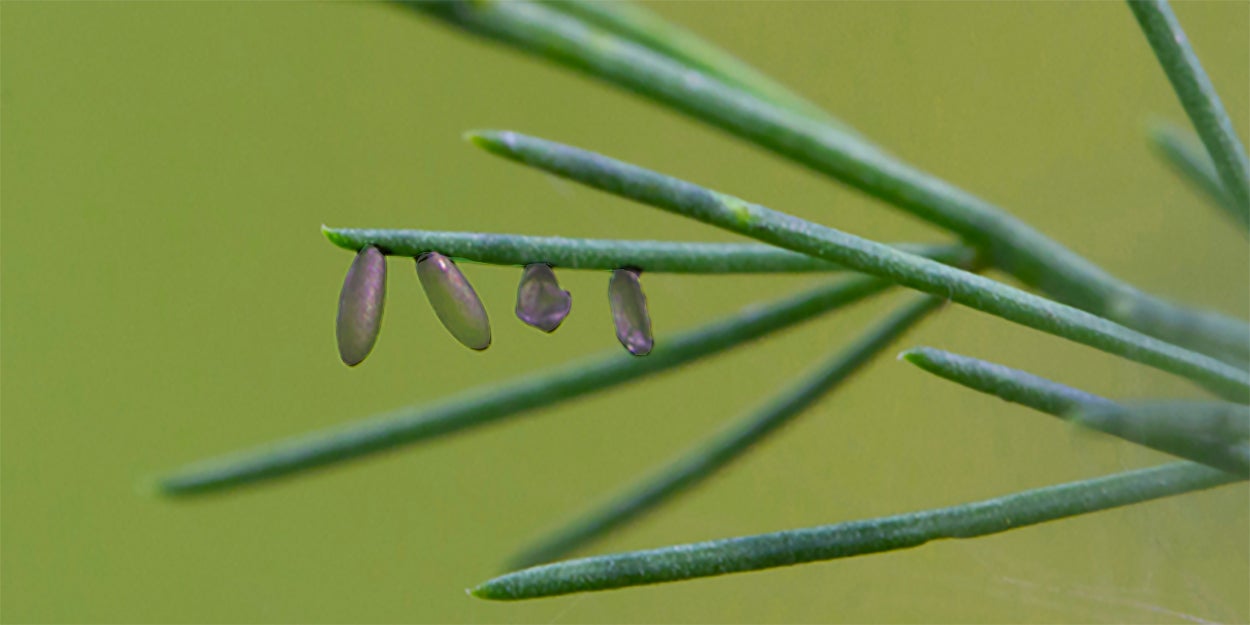
Twelve-spotted asparagus beetle eggs are green in color (Figure 6).
The beetles lay their eggs on the fern portion of asparagus plants.
Plant Injury and Management
Injury Symptoms
When either beetle feeds on asparagus spears in the spring the spears will become brown (Figure 7). Once the ferns appear, larvae and adults of both the common asparagus beetle and the twelve spotted asparagus beetle will feed on the leaves and will weaken the plant (Figure 8). The twelve-spotted asparagus beetle larvae also feeds on the berries, but that has little impact on the plant’s health.
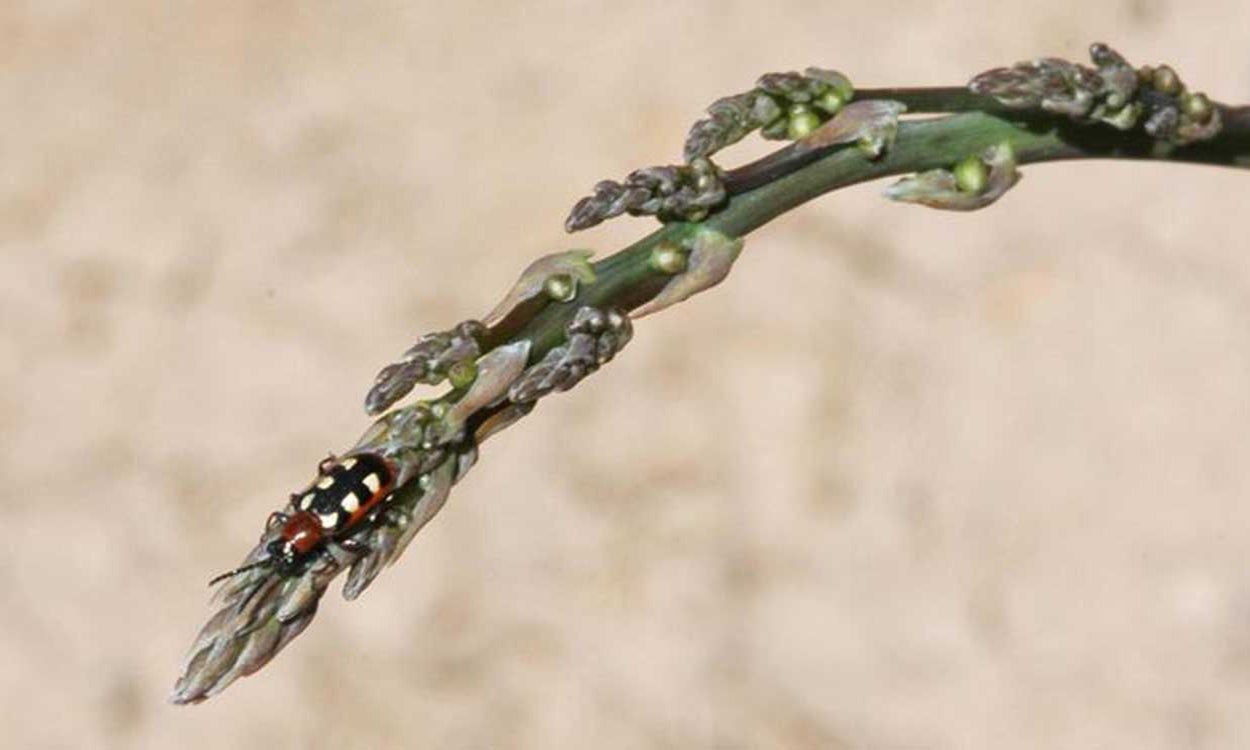
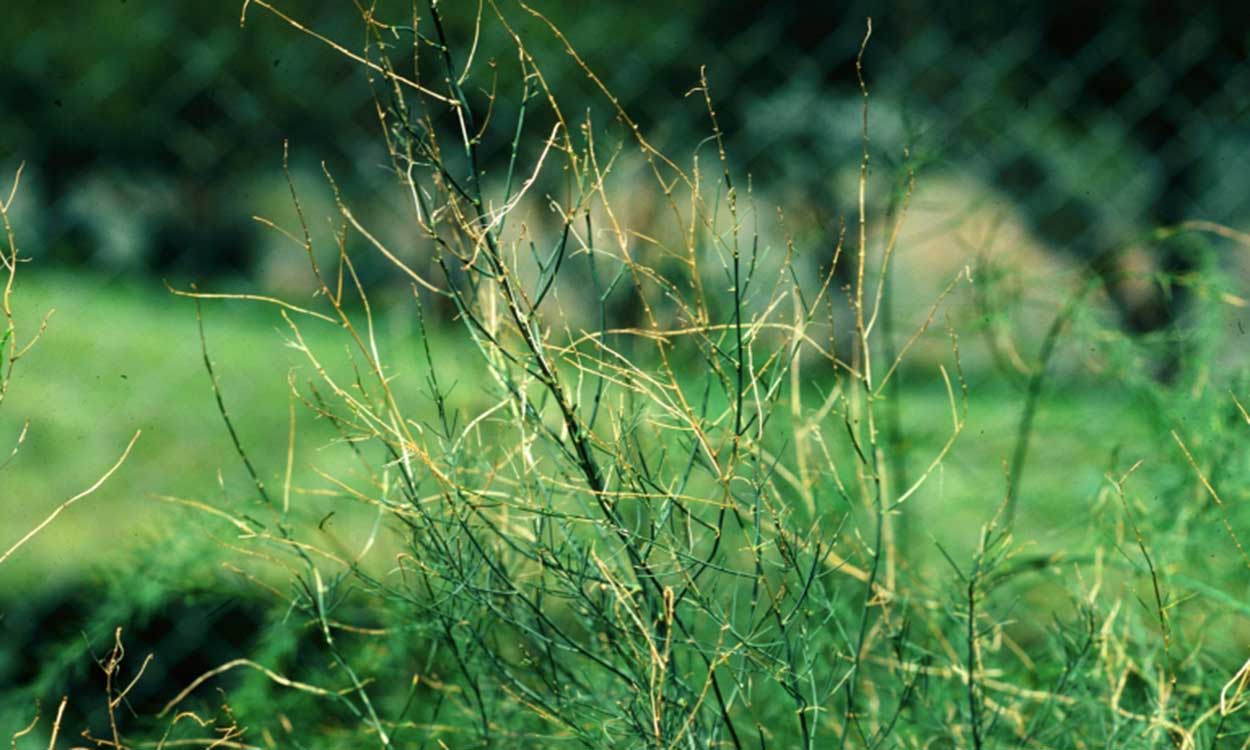
Management Recommendations
The best management strategy for asparagus beetles is to scout asparagus both in the spring and throughout the growing season and remove the observed beetles and larvae by hand and destroy them. It is important to scout for these pests later in the afternoon, as that is when they are most active. If the eggs are observed on the spears or the ferns remove them and destroy them. There are also parasitoid wasps that attack the larvae of the beetles, which can reduce the populations of additional generations. Other natural enemies, such as ladybug larvae, will also eat the asparagus beetle eggs and larvae.
When large populations are present, insecticides can be used to reduce their numbers. The threshold is when 10% of plants have one adult of either species present, or when 50 to 75% of plants have larvae present. Before applying an insecticide product, read the label and do not harvest before the listed pre-harvest interval period has expired.
An important fall management strategy is to clean your garden. Do not use grass clippings, mulch or leaves around asparagus plants, as the adults can use these materials as shelter for successful overwintering.


